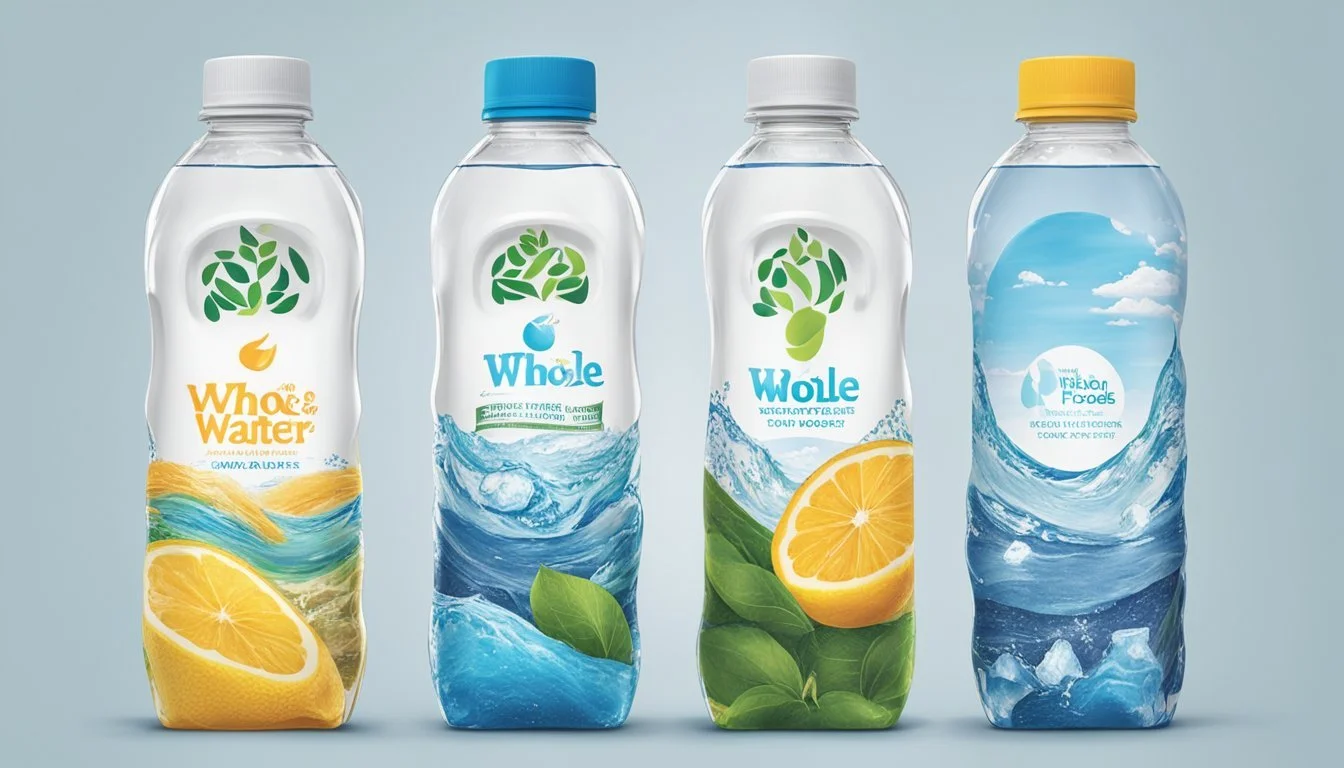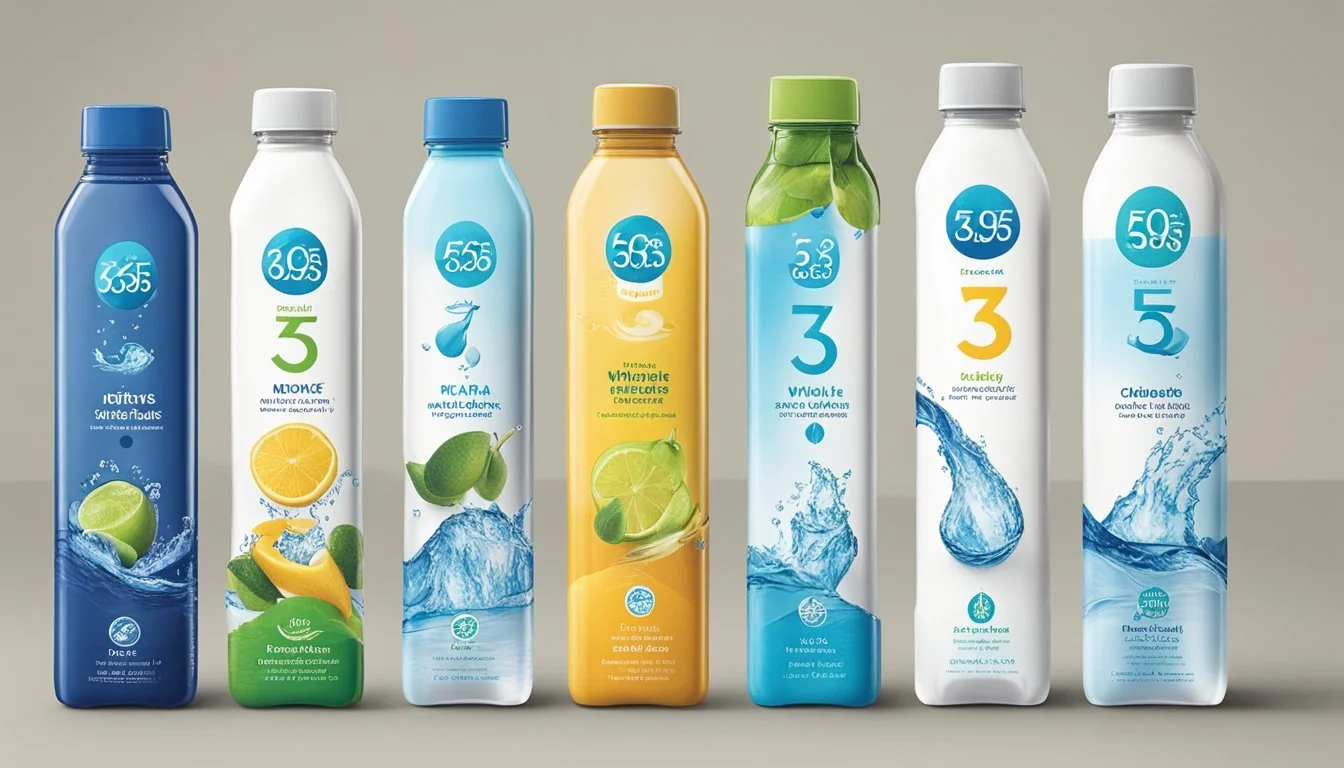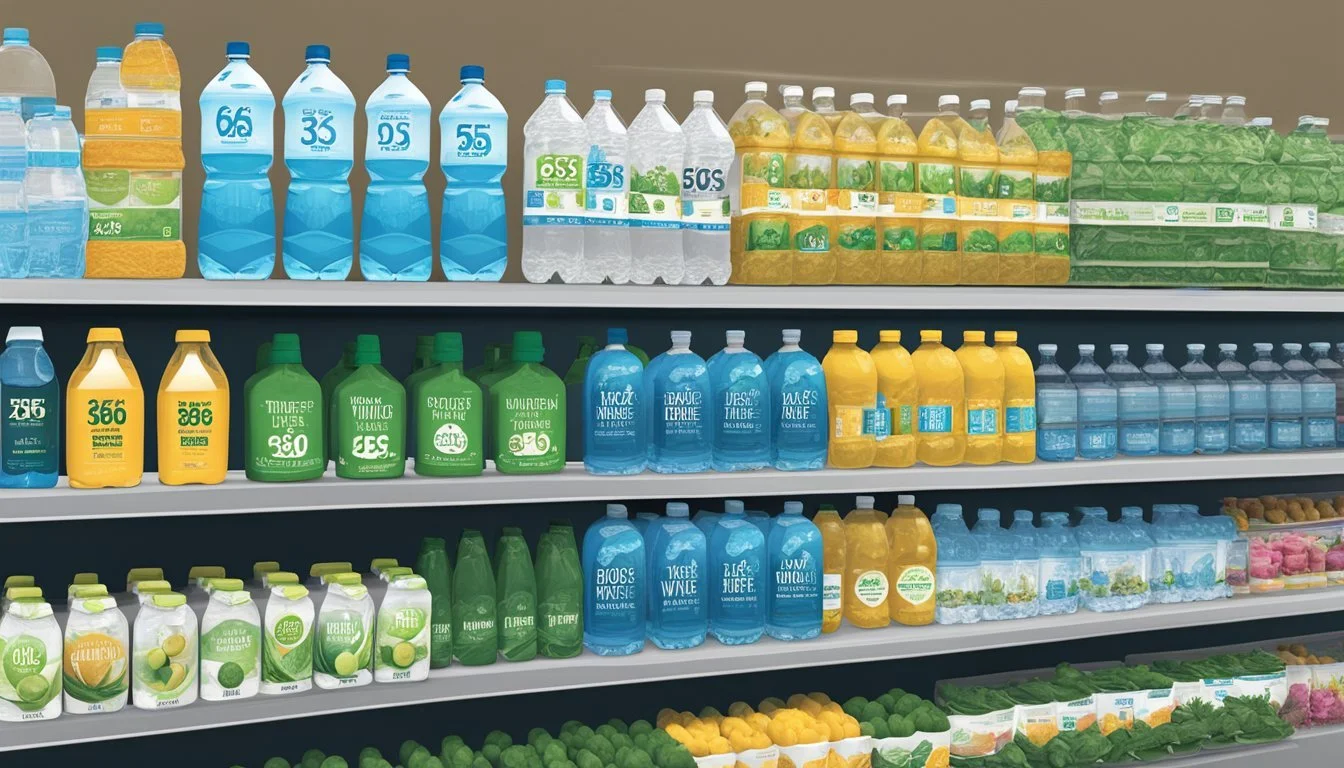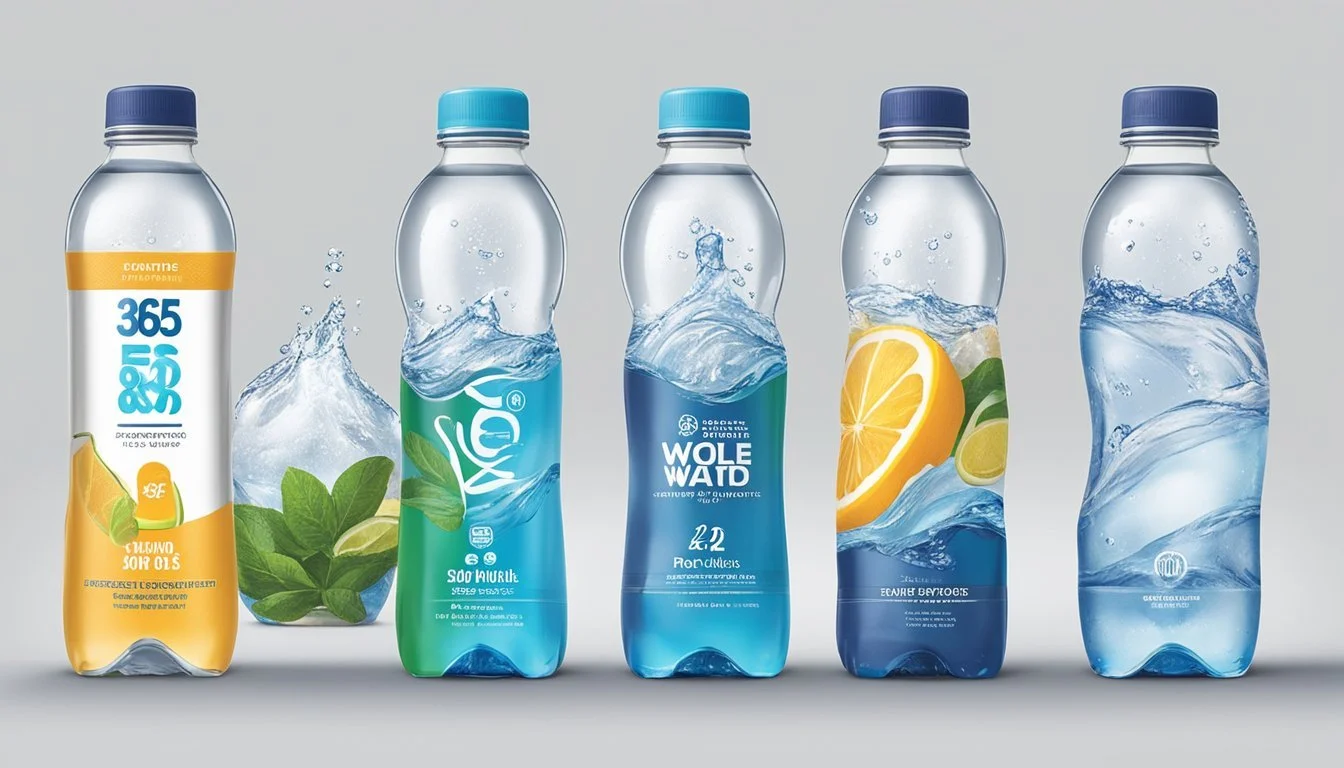Flow vs. Whole Foods 365
Which Bottled Water is Better for You?
Is the search for the best bottled water wearing you down? Look no further. Today’s comparison between Flow and Whole Foods 365 will help you make the right choice for your hydration needs. Both brands offer unique attributes, but their differences can significantly impact your experience and preference.
Flow water stands out for its eco-friendly packaging and naturally alkaline properties, making it a popular choice for environmentally conscious consumers. Whole Foods 365, on the other hand, offers a range of options including spring and electrolyte water, often at lower price points.
Considering the taste, cost, and additional health benefits, many users find Flow’s naturally sourced and higher pH water more refreshing and suitable for daily consumption. Meanwhile, Whole Foods 365 provides a budget-friendly alternative without compromising on basic quality and hydration. This article delves deep into these aspects to determine which bottled water is the superior choice for you.
Understanding Bottled Water
Bottled water comes in various types, each with distinct characteristics influenced by its source and treatment process. Companies must follow strict regulations to ensure safety and quality.
Types of Bottled Water
Spring Water: Naturally sourced from underground springs, it retains minerals found in the original source. Examples include 365 Everyday Value Spring Water.
Purified Water: Undergoes treatments like reverse osmosis to remove impurities, making it suitable for consumption regardless of the original source. This category includes many household brands.
Mineral Water: Contains naturally occurring minerals and electrolytes, often touted for health benefits. The mineral content must be consistent with local standards.
Alkaline Water: Enhanced to have a higher pH level, sometimes achieved by adding minerals. The 365 Everyday Value Alkaline Water ionized to pH 9.5+ is one example.
Electrolyte Water: Infused with added electrolytes for taste and hydration benefits. It’s popular among athletes and fitness enthusiasts.
Bottling Process
The bottling process starts by sourcing the water, whether from springs, wells, or other systems. Water then undergoes filtration to remove particulates and potential contaminants.
Purification Methods:
Reverse Osmosis: Employs a semi-permeable membrane to eliminate dissolved solids.
Distillation: Boils the water and condenses the steam, removing impurities.
The water is then tested for safety and quality before bottling. Facilities must maintain hygienic conditions to prevent contamination. Bottles are typically made from plastic or glass, with packaging designed to preserve taste and prevent leaching of chemicals.
Regulations and Standards
Bottled water manufacturers must adhere to stringent regulations set by authorities like the FDA in the United States. These regulations cover everything from source water requirements to labeling.
Safety Standards:
Microbial Limits: Ensures the absence of harmful bacteria.
Chemical Limits: Keeps levels of substances like lead and arsenic within safe bounds.
Labeling: Must clearly indicate the type of water and any treatments it has undergone. This helps consumers make informed choices based on their needs and preferences.
Compliance with these rules ensures that bottled water is safe and of high quality for consumers.
Comparative Analysis
When comparing Flow and Whole Foods 365 bottled waters, various factors such as quality, taste, pH levels, mineral content, and environmental impact come into play. Each brand offers distinct characteristics that appeal to different consumer preferences.
Quality Assessment
Flow is known for its high-quality, sustainably sourced water. It’s alkaline spring water that is free from additives and chemicals. The brand emphasizes eco-friendly practices in sourcing.
Whole Foods 365 offers several types of water including spring, alkaline, and electrolyte. Consumer reports indicate that their spring water may contain varying levels of PFAS, raising concerns about long-term health effects.
Comparison Table:
Brand Water Type Additives Sourcing Contaminants Concern Flow Alkaline Spring None Sustainable Low Whole Foods 365 Spring/Alkaline/Electrolyte None Mixed PFAS
Taste Profiles
Flow water has a natural, clean taste with a slight mineral edge due to its alkaline nature. It is marketed as smooth and crisp, appealing to those seeking a refreshing beverage experience.
Whole Foods 365 water varieties exhibit different taste profiles. The spring water is often described as having a dry aftertaste. Meanwhile, their alkaline and electrolyte waters are marketed to taste smoother and more balanced, yet consumer reviews vary.
PH Levels and Mineral Content
One of Flow's selling points is its high pH level, often at 8.1, which contributes to its smooth taste and potential health benefits. The water also contains essential minerals like calcium and magnesium.
Whole Foods 365's Alkaline Water is ionized to a pH of 9.5+, making it more alkaline than Flow. The spring and electrolyte waters have lesser pH stability, integrating trace minerals without substantial health claims.
PH Level Comparison:
Flow: pH 8.1
Whole Foods 365 Alkaline: pH 9.5+
Packaging and Environmental Impact
Flow prides itself on using Tetra Pak packaging, which is made from renewable materials and is fully recyclable. This aligns with their sustainability goals and reduces plastic waste.
Whole Foods 365, on the other hand, uses plastic bottles for most of its products. Despite being recyclable, plastic is less environmentally friendly compared to the Tetra Pak used by Flow. Shoppers concerned about ecological footprint may prefer Flow for its packaging ethics.
Environmental Impact Overview:
Flow: Tetra Pak, low plastic use, high recyclability
Whole Foods 365: Plastic bottles, higher environmental impact
Each brand offers distinct advantages, influencing choices based on personal priorities regarding taste, environmental responsibility, and water quality.
Health and Safety Considerations
When comparing Flow and Whole Foods 365 bottled water, it is crucial to examine potential health risks and ensure compliance with industry standards. Key areas of focus include chemical contaminants, PFAS and heavy metals, and adherence to regulatory guidelines.
Chemical Contaminants
Chemical contaminants in bottled water are a significant concern for consumers. Flow and Whole Foods 365 must both meet regulations set by the EPA and FDA for safe drinking water.
Flow water undergoes rigorous testing to detect harmful substances. Similarly, Whole Foods 365 ensures that their water passes multiple quality checks, though Consumer Reports found some contaminants in popular brands.
Both brands emphasize transparency about their purification processes and use state-of-the-art filtration techniques. However, consumers should be aware that even trace chemicals can raise health risks over time.
PFAS and Heavy Metals
PFAS chemicals, including lead, iron, and arsenic, pose serious health risks in drinking water. Recent tests by Consumer Reports revealed varying levels of PFAS in several bottled water brands.
Lead and arsenic can result in significant health issues, especially with long-term exposure. Flow water claims to be low in PFAS and heavy metals. Whole Foods 365, as indicated in reports, had detectable levels of PFAS in some samples tested.
Testing results highlight the importance of consumers regularly checking updated reports to ensure their bottled water remains within safe consumption levels set by health authorities.
Industry Standards Compliance
Adherence to industry standards is fundamental for bottled water safety. Both Flow and Whole Foods 365 commit to meeting strict guidelines from the EPA and FDA.
The EPA regulates contaminants in public water systems to protect human health. The FDA sets limits for bottled water quality. Consumer Reports frequently publishes findings on bottled water brands' compliance with these standards, shedding light on any safety issues.
Flow water is marketed as meeting or exceeding these regulatory standards. Whole Foods 365 also assures compliance but has faced scrutiny due to varying contaminant levels. Regular certification and independent testing are critical for ongoing safety assurance.
Brands and Market Overview
The bottled water market features a diverse range of products from numerous well-known brands. Whole Foods Market's 365 Everyday Value line is a significant player, particularly in the natural and organic segments. The International Bottled Water Association (IBWA) oversees regulatory standards, ensuring safety and quality across the industry.
Major Water Brands
Several prominent brands dominate the bottled water market. Nestlé owns popular brands like Poland Spring, characterized by its natural spring sourcing. Coca-Cola markets Dasani, known for its purified water with added minerals. Fiji Water, recognizable by its square bottles, emphasizes its artesian sources in Fiji, promoting purity and exotic appeal. Essentia specializes in alkaline water with a high pH level, catering to health-conscious consumers. These brands leverage extensive marketing and distribution networks to maintain their market positions.
Whole Foods Market's Role
Whole Foods Market offers the 365 Everyday Value line, which includes various water products such as spring water, electrolyte water, and alkaline water. Available at competitive prices, these products appeal to budget-conscious shoppers seeking quality options. Whole Foods' emphasis on natural and organic products enhances the brand's reputation. By positioning the 365 Everyday Value line in its stores, Whole Foods provides accessible and affordable hydration solutions while maintaining its commitment to quality and sustainability.
The IBWA
The International Bottled Water Association (IBWA) plays a crucial role in the bottled water industry. It sets stringent standards for safety, quality, and environmental responsibility. Members, including some top brands, must adhere to the IBWA's model code, ensuring their products meet rigorous testing and certification processes. The IBWA also advocates for industry interests, providing educational resources and supporting sustainable practices. Through its efforts, the IBWA ensures consumers receive safe, high-quality bottled water options.
Consumer Insights
Consumers consider various factors in their purchasing decisions and often prioritize health and hydration when choosing bottled water. Below, both aspects are examined to provide a clearer understanding.
Purchasing Decisions
When purchasing bottled water, consumers weigh cost, brand reputation, and water quality. Flow, known for its high-quality alkaline water, appeals to those seeking premium hydration. Whole Foods 365 offers affordability, attracting price-sensitive buyers. According to a Consumer Reports survey, the purity and absence of harmful chemicals like PFAS also influence purchasing choices. Many consumers rely on brand transparency and ingredient labels, ensuring safe consumption.
Health and Hydration Trends
Health and wellness drive many individuals' water choices. Flow markets itself with added minerals and electrolytes, beneficial for active lifestyles. Conversely, Whole Foods 365 claims to provide clean, simple, spring water. Reports from Consumer Reports highlight that certain brands, including Whole Foods 365, have been scrutinized for containing trace amounts of arsenic and other contaminants. Hydration trends also show a growing preference for waters that support overall wellness and sustainability. Water sommeliers, as well as public health advocates, emphasize the importance of drinking safe, quality water for better health outcomes.
Environmental and Ethical Aspects
Examining the environmental and ethical aspects of Flow and Whole Foods 365 bottled water reveals distinct approaches to sustainability and packaging innovations.
Sustainability in Bottling
Flow emphasizes its commitment to sustainability by sourcing its water from natural springs that are managed to avoid depletion. The brand's water supply is carefully monitored to ensure it remains sustainable.
Whole Foods 365 sources its water from a variety of locations, including spring water sources. Some of these sources, however, have faced scrutiny due to contamination concerns, as evidenced by past recalls.
Packaging Innovations
Flow is known for its eco-friendly packaging. The brand uses Tetra Pak cartons made from renewable resources, which are more recyclable compared to traditional plastic bottles. This reduces the environmental impact of single-use packaging.
Whole Foods 365 uses standard plastic bottles for its packaging. While efforts are made to use recyclable materials, plastic water bottles remain a significant environmental concern due to their contribution to pollution and landfill waste. Whole Foods 365 has not yet adopted significant packaging innovations that match Flow's efforts.
Conclusion and Recommendations
When comparing Flow and Whole Foods 365 bottled waters, several factors should be considered.
Taste and Quality: Both brands offer a range of options, but the 365 Everyday Value Spring Water has been noted in various reports for its quality and affordability. Flow, known for its naturally alkaline water, maintains a consistent pH of around 8.1, which some consumers prefer.
Contaminants: According to Consumer Reports, Whole Foods’ Starkey Spring Water has had issues with arsenic levels close to the federal limit. Flow's water sources are typically free from such concerns, emphasizing its purity and rigorous testing standards.
Cost: Whole Foods 365 water is generally more affordable. For example, the 365 Everyday Value Electrolyte Water is priced at $0.79 per 500 mL. Flow products tend to be higher in price, reflecting their premium positioning and packaging.
Sustainability: Both companies claim to prioritize sustainability. Flow uses eco-friendly Tetra Pak cartons. Whole Foods supports sustainable practices but uses traditional plastic bottles, which some consumers may find less environmentally friendly.
Recommendations: For consumers prioritizing cost and basic hydration needs, Whole Foods 365 provides an affordable and reliable option. Those emphasizing premium quality and sustainability may prefer Flow for its alkaline properties and eco-friendly packaging.
Consumer Reports and other independent editors commend both brands for certain strengths, helping consumers make informed choices. They suggest reviewing product labels, recent test results, and personal preferences before deciding.
More About Flow
Flow vs Whole Foods Italian Still Mineral water: Which Bottled Water is Better?
Mountain Valley Spring Water vs Flow: Which Bottled Water is Better?
More About Whole Foods 365
Acqua Pana vs Whole Foods 365: Which Bottled Water is Better?
Alkaline88 vs Whole Foods 365: Which Bottled Water is Better?
Antipodes vs Whole Foods 365: Which Bottled Water is Better?
Aqua Carpatica vs Whole Foods 365: Which Bottled Water is Better?
Arrowhead vs Whole Foods 365: Which Bottled Water is Better?
Big Chill vs Whole Foods 365: Which Bottled Water is Better?
Boxed Water vs Whole Foods 365: Which Bottled Water is Better?
Cascade Mountain vs Whole Foods 365: Which Bottled Water is Better?
Castle Rock vs Whole Foods 365: Which Bottled Water is Better?
Core Hydration vs Whole Foods 365: Which Bottled Water is Better?
Crystal Geyser vs Whole Foods 365: Which Bottled Water is Better?
Deer Park vs Whole Foods 365: Which Bottled Water is Better?
Hawaii Volcanic vs Whole Foods 365: Which Bottled Water is Better?
Hawaiian Springs vs Whole Foods 365: Which Bottled Water is Better?
Ice Mountain vs Whole Foods 365: Which Bottled Water is Better?
Icelandic Glacial vs Whole Foods 365: Which Bottled Water is Better?
Just Water vs Whole Foods 365: Which Bottled Water is Better?
Liquid Death vs Whole Foods 365: Which Bottled Water is Better?
Mountain Valley Spring Water vs Whole Foods 365: Which Bottled Water is Better?
Nestle Pure Life vs Whole Foods 365: Which Bottled Water is Better?
Open Water vs Whole Foods 365: Which Bottled Water is Better?
Poland Spring vs Whole Foods 365: Which Bottled Water is Better?
Pure Life vs Whole Foods 365: Which Bottled Water is Better?
Purely Sedona vs Whole Foods 365: Which Bottled Water is Better?
Richard's Rainwater vs Whole Foods 365: Which Bottled Water is Better?
San Pellegrino vs Whole Foods 365: Which Bottled Water is Better?
Simple Truth vs Whole Foods 365: Which Bottled Water is Better?
Smartwater vs Whole Foods 365: Which Bottled Water is Better?
Solan de Cabras vs Whole Foods 365: Which Bottled Water is Better?
Talking Rain AQA vs Whole Foods 365: Which Bottled Water is Better?
Topo Chico vs Whole Foods 365: Which Bottled Water is Better?
Weird Water vs Whole Foods 365: Which Bottled Water is Better?
Whole Foods 365 vs 1907water: Which Bottled Water is Better?
Whole Foods 365 vs BodyArmor: Which Bottled Water is Better?
Whole Foods 365 vs CBD Living: Which Bottled Water is Better?
Whole Foods 365 vs Crystal Lake: Which Bottled Water is Better?
Whole Foods 365 vs Essence pH10: Which Bottled Water is Better?
Whole Foods 365 vs Kirkland Signature: Which Bottled Water is Better?
Whole Foods 365 vs Proud Source: Which Bottled Water is Better?
Whole Foods Italian Still Mineral water vs Whole Foods 365: Which Bottled Water is Better?
Zephyrhills vs Whole Foods 365: Which Bottled Water is Better?







